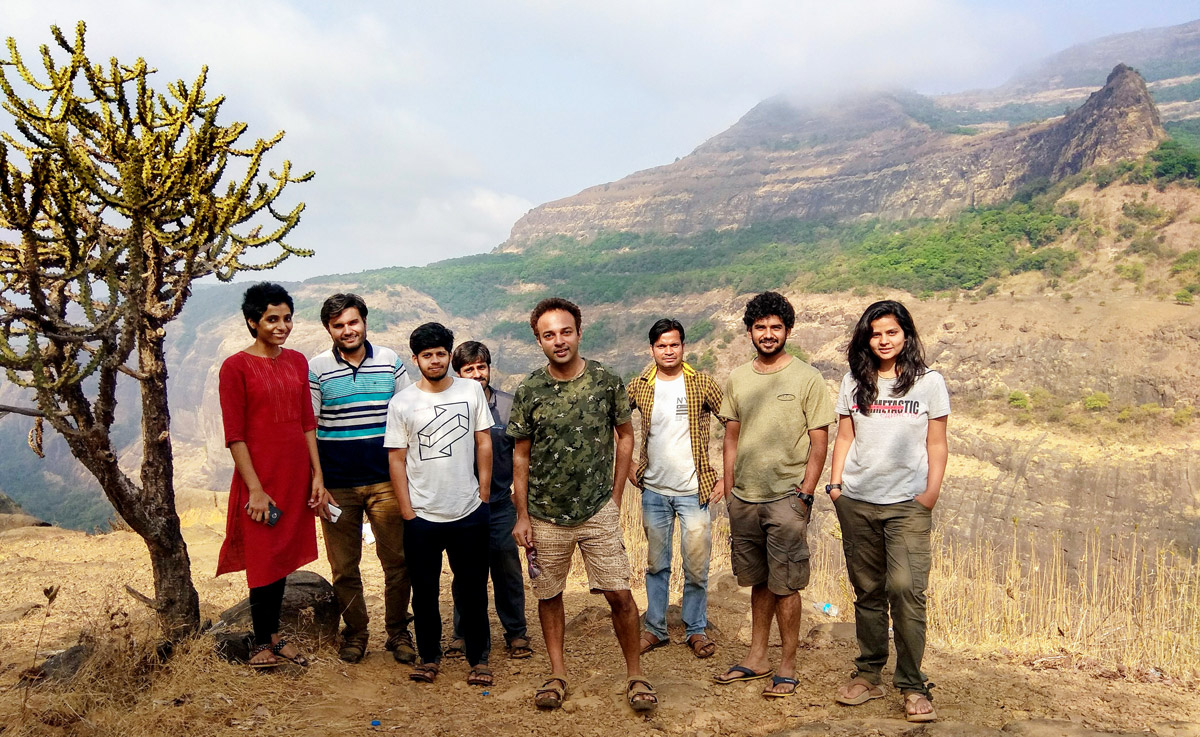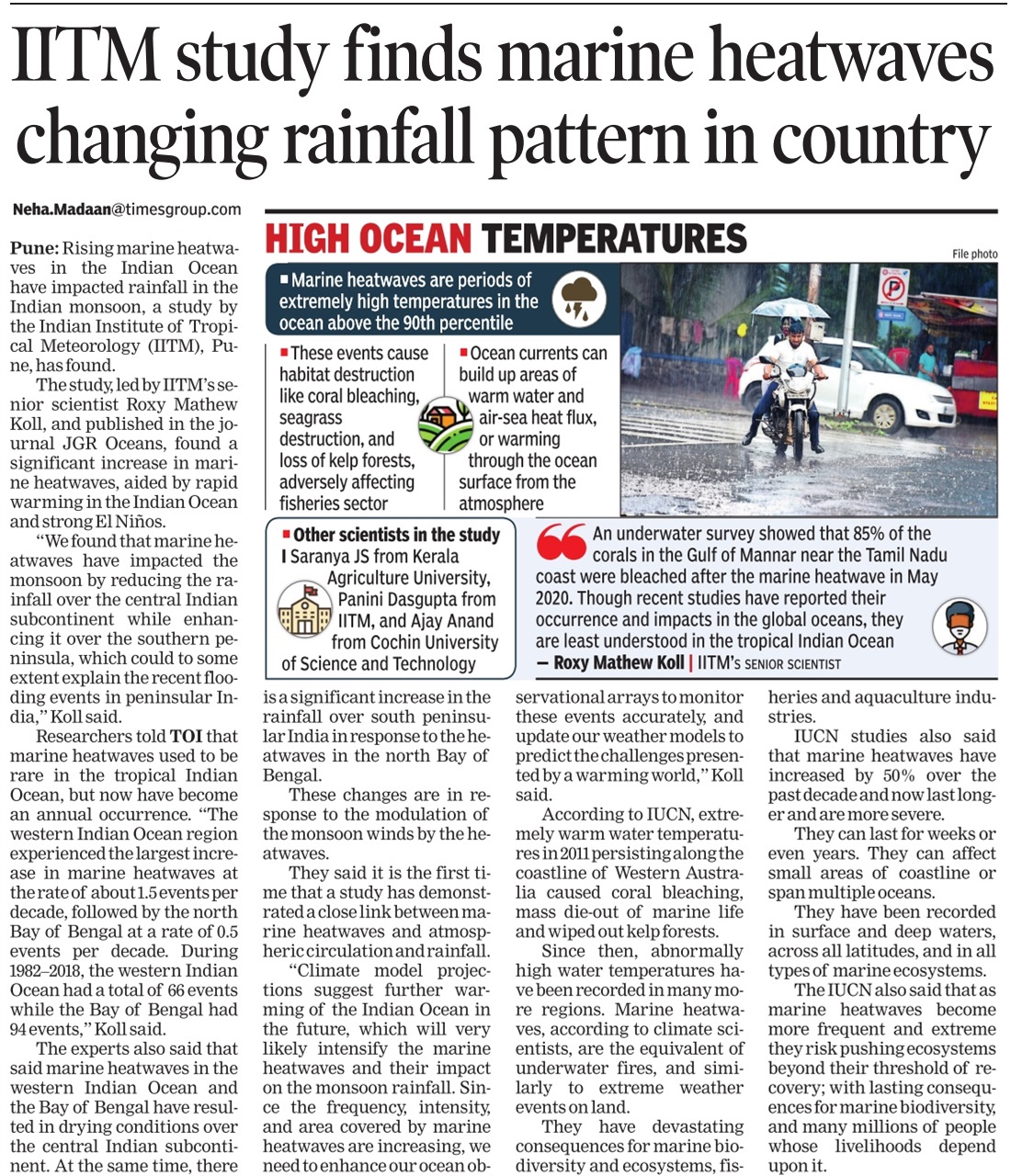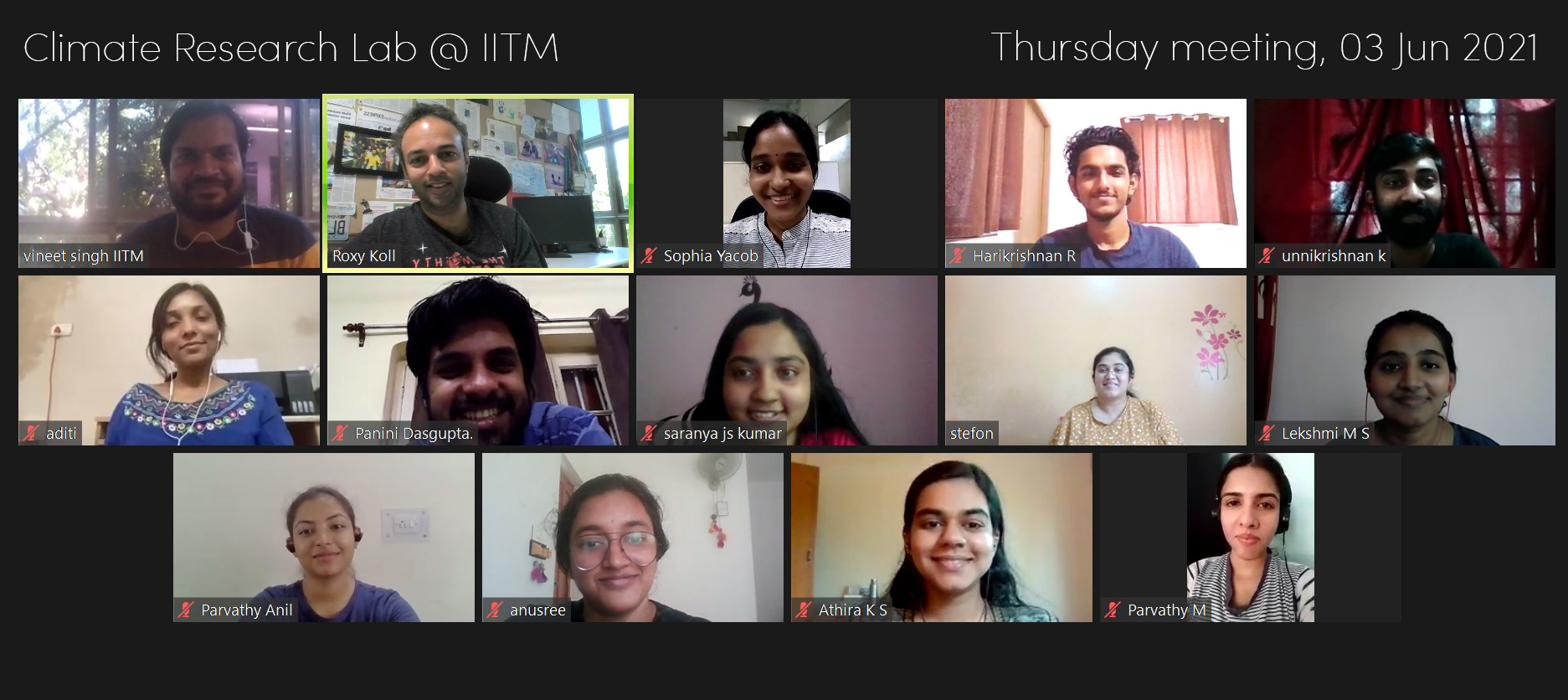Our recent research points out a significant decreasing trend in the summer monsoon rainfall over the Indian subcontinent during the past century. The study suggests that the rapid warming in the Indian Ocean plays an important role in weakening the monsoon circulation and the rainfall.
Monsoon drivers – land-sea temperature difference and sea surface temperatures
Ideally, under the global warming scenario, the monsoon drivers should get stronger, resulting in increased rainfall. One of the major monsoon drivers is the land-sea temperature difference in summer, which drives the monsoon circulation towards the subcontinent. Previous studies suggested that the land in the northern hemisphere is warming much faster than the oceans, which implies that the monsoon driver should be getting stronger. Also, the rising ocean surface temperatures entail increased moisture availability in the atmosphere due to an increase in evaporation and moisture holding capacity of air. Increased land-sea temperature contrast and moisture availability hence, should ideally increase the monsoon rainfall. However, that is not the case for the Indian monsoon.
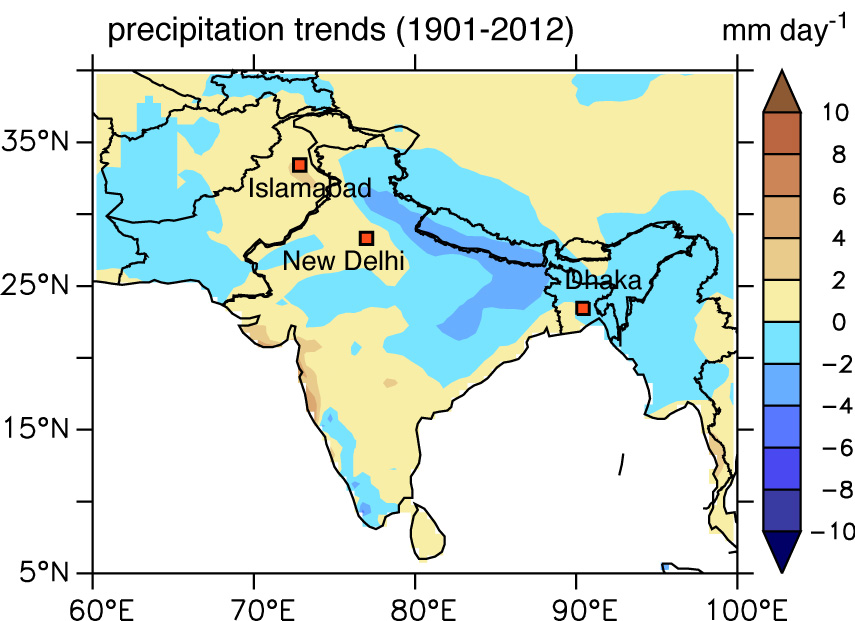 Reduced rainfall over South Asia
Reduced rainfall over South Asia
Observed data dating from the 1870s are available for the summer monsoon rainfall from the Indian Meteorological Department and other sources. Using the data from 1901-2012, we found that the rainfall is decreasing over central South Asia – from south of Pakistan through central India to Bangladesh. Over India, the decrease is observed over central and north India, and the Western Ghats (Kerala). The decrease is highly significant over central-north India, where agriculture is still mostly rain-fed, with a reduction of up to 10-20% in the mean rainfall.
Indian Ocean warming results in a weakened monsoon driver
So why is the monsoon weakening, despite the suggested global increase of the monsoon drivers? The study finds that contradictory to what earlier studies have noted, the land-sea thermal contrast over the South Asian domain has reduced in the past decades. 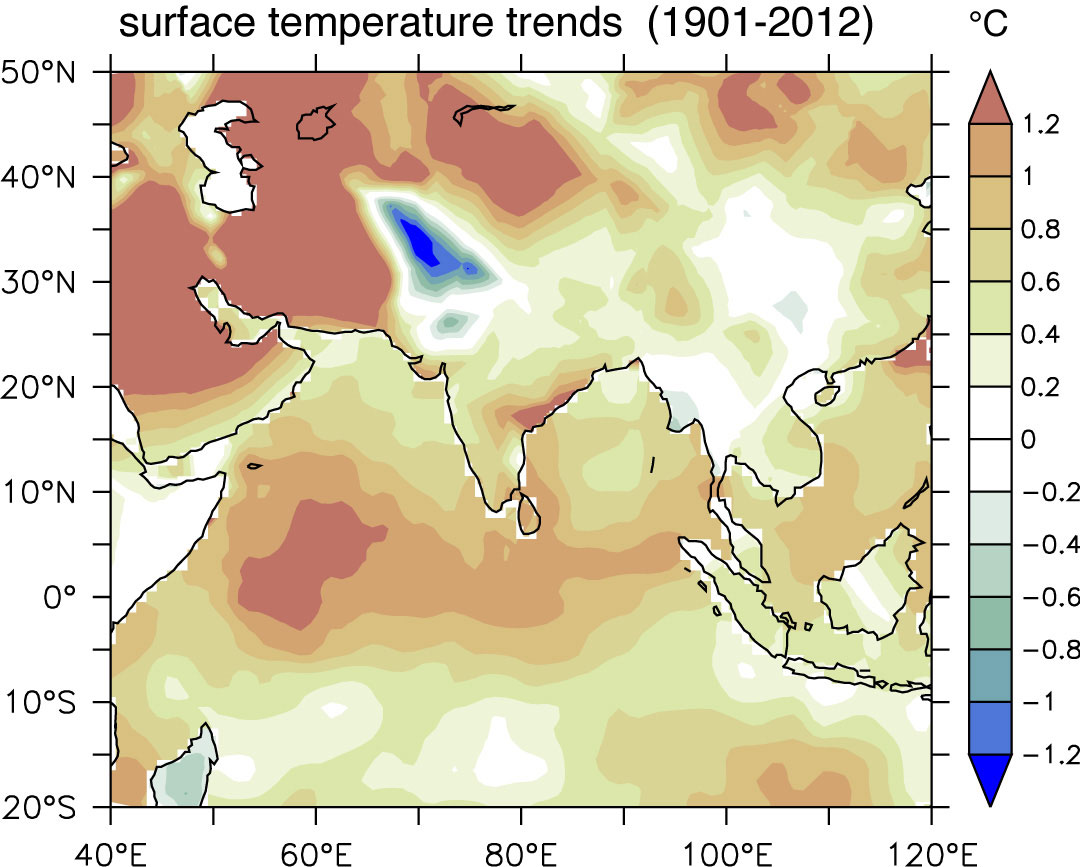 This reduction in land-sea temperature is primarily contributed by strong warming in the Indian Ocean. The surface warming in the Indian Ocean, especially in the western regions, has reached values of up to 1.2°C during the past century, much larger than the warming trends in the other tropical oceans. The decrease in the land-sea thermal contrast is also visible in the upper atmosphere, as the warming trends in the ocean surface are transferred to the atmosphere above through convective processes. Apart from the ocean warming, a part of the decrease in land-sea temperature difference is also due to suppressed warming over the Indian land mass, possibly due to increased aerosols or reasons which are still uncertain.
This reduction in land-sea temperature is primarily contributed by strong warming in the Indian Ocean. The surface warming in the Indian Ocean, especially in the western regions, has reached values of up to 1.2°C during the past century, much larger than the warming trends in the other tropical oceans. The decrease in the land-sea thermal contrast is also visible in the upper atmosphere, as the warming trends in the ocean surface are transferred to the atmosphere above through convective processes. Apart from the ocean warming, a part of the decrease in land-sea temperature difference is also due to suppressed warming over the Indian land mass, possibly due to increased aerosols or reasons which are still uncertain.
Weakened monsoon circulation
The warming Indian Ocean also plays a role in weakening the monsoon circulation. Increased warming in the ocean enhances the large-scale upward motion of warm moist air over the equatorial ocean. This enhanced upward motion over the ocean is compensated by the subsidence of dry air over the subcontinent, inhibiting convection and rainfall over the Indian landmass. This means that the warming Indian Ocean has resulted in surplus rains over the ocean at the cost of the monsoon rains over land, simultaneously drying the Indian subcontinent.
Future
Climate models suggest that the Indian Ocean will continue to warm under increasing greenhouse gases. Will the monsoon decrease further? Questions remain. The critical role of the warm Indian Ocean deserves special attention for its decisive effect on the food security of a large fraction of the world’s population and its role in inducing a drought over the Indian subcontinent.
The team behind the study
The study is part of an Indo-French collaboration under the National Monsoon Mission set up by the Ministry of Earth Sciences. The research was led by Dr. Roxy Mathew Koll and Ritika Kapoor, along with collaborators Pascal Terray, Raghu Murtugudde, Ashok Karumuri, and B.N. Goswami.
Schematic illustration of the mean conditions (left) and weakening trend (right) of the monsoon:
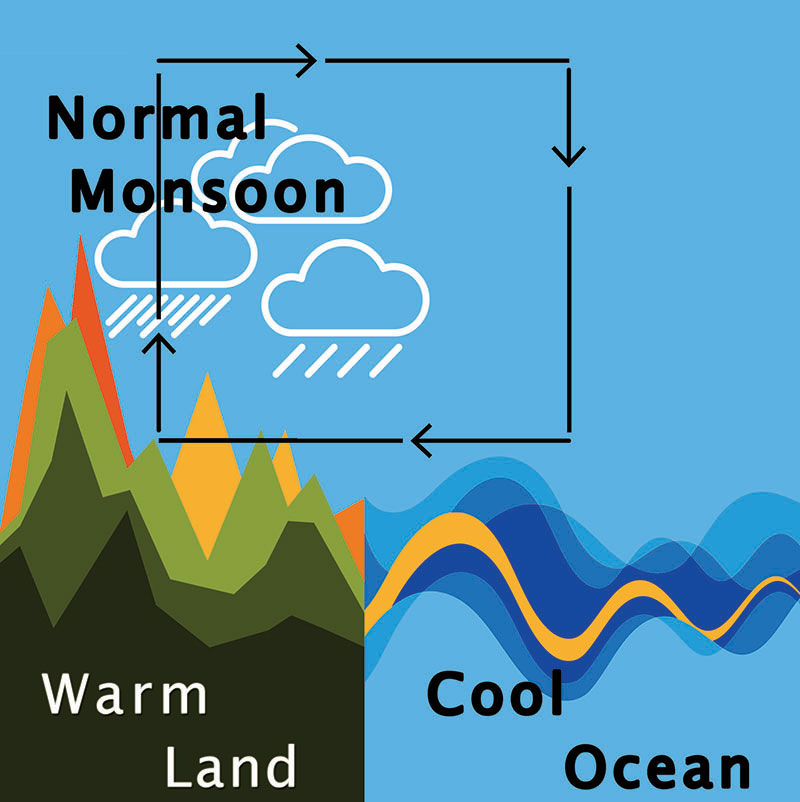
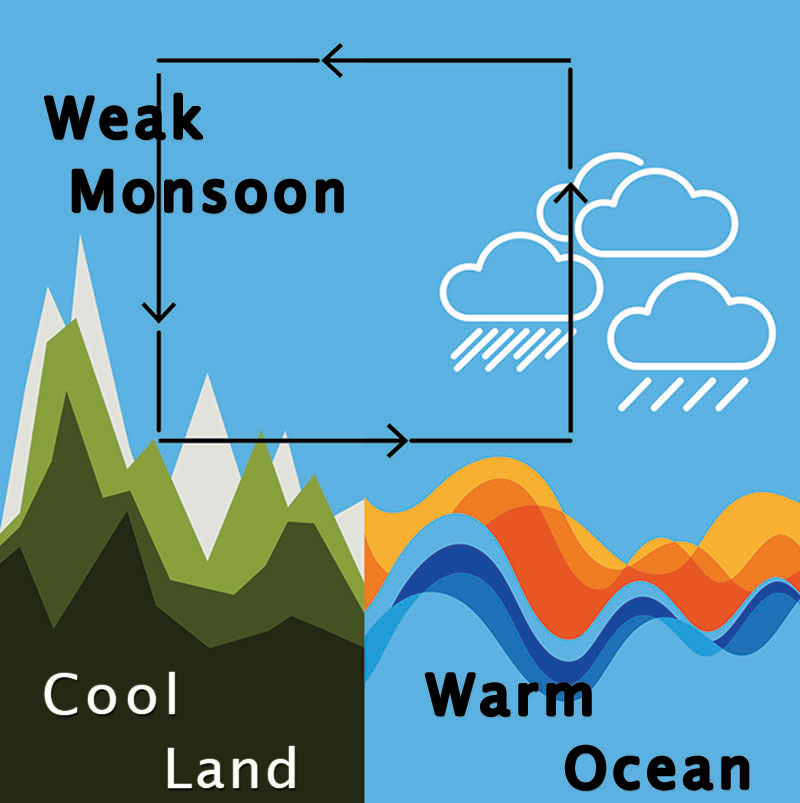
Media Highlights: The study received huge attention in the media, with a national television channel airing it at prime time and many newspapers covering it as front page headlines. See our media section for details.
Reference:
Roxy M. K., K. Ritika, P. Terray, R. Murutugudde, K. Ashok and B. N. Goswami, 2015: Drying of Indian subcontinent by rapid Indian Ocean warming and a weakening land-sea thermal gradient. Nature Communications, 6:7423, doi:10.1038/ncomms8423 [pdf]

